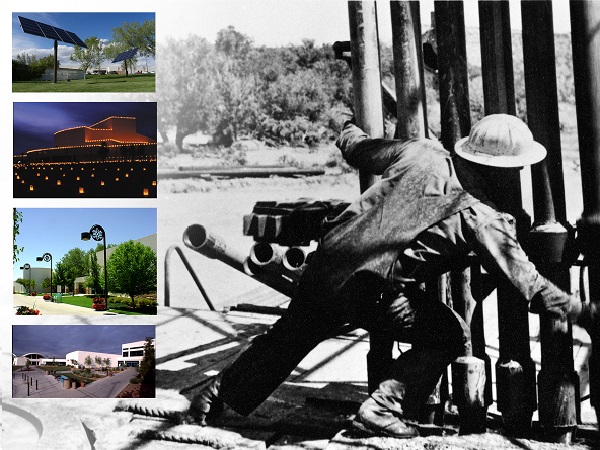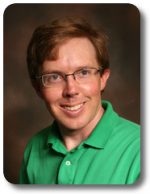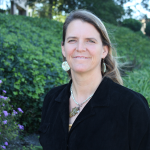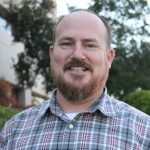Apply now to join our next cohort of Community Science Fellows and Community Leads!

Photo Courtesy of Luke Renner
The primary objectives for this project were to:
The vision for the makerspace was one that would be responsive to the needs of the local community surrounding San Juan College.
Mira Olson’s design team at Drexel University met weekly and held frequent check ins with Luke Renner and his team at SJC to ensure the designs were on-target. The whole team met monthly with Strategic Energy Innovations, Inc. who advised them on curriculum development and how to make the space more energy and environmentally sensitive.
The makerspace will celebrate it’s groundbreaking on February 5th. The combined efforts of the team resulted in fundraising over $300,000 for the full build-out of the makerspace.
There are hopes that the makerspace will:
San Juan College unveils new work space for entrepreneurs
Reflections
From this project, others may learn better ways to partner with TEX for their own purposes. For instance,
The team noted that the following contributed to the success of the project:
However, there were a few key things that the team would do differently if they had the chance to do this project again:
San Juan College was established in Farmington, New Mexico in 1956 to serve a county service area larger than the state of Connecticut. The school is a majority minority institution with a 30% Native American (including the Navajo, Southern Ute, Apache and Ute Mountain Ute tribes) and 17% Hispanic student population. Current enrollment is approximately 12,000 students per year. San Juan College is first in the nation for granting certificates less than 1 year and second in the nation for granting associate degrees to Native American students. They’ve seen a 143% increase in the number of graduates over the last 5 years.
In 2016, Farmington, New Mexico was identified by USA Today as the #1 fastest shrinking city in the United States, with a population growth (2010-2015) of -8.76%. This number is tied to fewer economic opportunities in the area, due in large part to a weak job market and declining income levels as a result of an economy largely dependent on declining fossil fuel industries.
To counteract this trend – and provide greater opportunities for its students and the surrounding community – San Juan College is partnering with the Drexel University School of Engineering, Architectural Engineering Department to create a makerspace, a collaborative work space inside a school, library or separate public/private facility for making, learning, exploring and sharing that uses high tech to no tech tools, on campus. The makerspace will help support economic diversification, self-employment and trade skill development, in part by looking at new ways to efficiently manage and use natural resources; improve the efficient use of energy; and many new innovative and creative ways to improve the living conditions of the community by improving their economic well-being.
TEX was asked to assist San Juan College in the development of the criteria for the maker space, and to work with the students as the design is being developed. While the makerspace will be broad in application, San Juan College wants its design to be energy efficient, and to incorporate sustainable principals to the most extent possible. In addition, the ideas of being sustainable and energy efficient should be incorporated into the design of the makerspace to give users the opportunity to participate in an area that is not only a great area for future growth and opportunity, but beneficial to the needs of the local communities.
Cyane and Tim will work with the community leaders on this project in an advisory role. The team will consider the school’s curriculum, as well as industry needs and trends, to provide feedback and advice to the students and faculty designing the makerspace as well as area schools and community members that will use the space. Together, they will think through equipment needs and how to design the Makerspace to make it most appropriate and effective in meeting the project’s goals and the multi-use vision of San Juan College’s makerspace.
Luke Renner’s Media Arts & Design students produced 2 video segments on the proposed makerspaces.
Video #1: Overview of the makerspaces featuring SJC’s Luke Renner and Judy Castleberry and EPA CUPPS’s Michael Burns.
Video #2: San Juan County inventor Frank Santoro discusses his building material invention and the future opportunities for inventors at the San Juan College Makerspace.
[San Juan College Digital Media Arts and Design Students, Justin Brown (editor), Jonah John (camera/grip) and Devan Griffith (audio/grip); Music provided by Argofox: TheDiabolicalWaffle – My Wish]

Luke Renner is the Professor of the San Juan College Digital Media Arts & Design Program. He worked for 7 years in broadcast television at an NBC affiliate. During this time he produced over 80 local interest shows including Great Southwest Voice of Native America. Luke then left television to manage marketing and public relations for the Farmington Museum system. He later started a marketing division for the City of Farmington’s Parks, Recreation and Cultural Affairs which oversees the museum system and seven other departments. In 2004, he began teaching as adjunct faculty in the San Juan College Creative Arts and Design Program then began teaching full-time in 2007. During this time, he re-designed the existing program into the current Digital Media Arts and Design Program. In 2009 and 2015, 2017 he was awarded the Tarpley Teaching Excellence Award and the San Juan College Golden Sun Award in 2017 for commitment to the college mission and community. In 2011 he received an award along with DMAD students for Service Learning as a result of a grant project with the local Boys & Girls Club that had club members working on multimedia projects for club promotion. Other media related projects include video production for an interactive park kiosk featuring World War II veterans. A portion of this project is in the Library of Congress’s Veteran History Project permanent collection. In 2011 Mr. Renner also filmed, edited and produced Chautauqua event featuring: Ms. Judith Avila with special guest Mr. Chester Nez. Mr. Chester Nez was the last surviving of the original 29 Navajo Code Talkers at the time of the filming. The DVD rights were given to the Aztec Public Library to benefit their Digital Arts Program.
Judy Castleberry, Director, San Juan College Enterprise Center (Photo and biography coming soon!)

Cyane Dandridge is the Founder and Executive Director of Strategic Energy Innovations (SEI), as well as the School of the Environmental Leadership (SEL). Over her 30 plus years of experience, Cyane has seen the big picture of how communities lack access to energy efficiency services, clean technology, and real-world sustainability pathways. After receiving her M.S. in Building Technology from the Massachusetts Institute of Technology, Cyane utilized her entrepreneurship and knowledge of innovation in the built environment to bring climate solutions to the community level. By connecting students, residents, government officials, and the workforce in the design process of sustainability programs, she believes we can better pinpoint opportunities for communities to reach their goals. With so many groups working toward our climate future, Cyane is excited for the potential our youth and communities have to create an environmentally responsible world and is proud of SEI’s role in leveraging them.

Timothy Bingham serves as Program Manager for the Education Team at Strategic Energy Innovations. Prior to this role and for the last 7 years, Tim has been the lead Project Lead The Way (PLTW) engineering and architecture pathway instructor for the Stanley E. Foster School of Engineering, Innovation and Design at Kearny Educational Complex in San Diego. As lead instructor, Tim collaborated and created architectural, engineering, green technology and environmental sustainability curriculum to meet the needs of his students through project-based learning. Tim is a master PLTW instructor, training other teaching professionals from across the nation in the PLTW Civil Engineering and Architecture curriculum around the country for the last 4 years. Tim is the winner of the California Project Lead the Way Engineering Teacher of the Year award. He has also taught as adjunct faculty at Cuyamaca College in San Diego, and prior to that, was a designer for 2 architectural firms in the San Diego area. Tim has a degree in Architecture from the University of Miami, and a California Teaching Credential for Engineering and Architecture.
The EPA’s College Underserved Community Partnership Program (CUPP), has assisted the efforts of San Juan College in the development of this makerspace by helping to establish a partnership between San Juan College and Drexel University in Philadelphia, PA. San Juan College will develop the criteria to be used in the development of the design for the maker space. The criteria will be discussed and agreed to by both schools. Drexel University will engage a senior class as the design group, a group composed of architectural students, engineers, and other academic areas as needed to develop the maker space design for San Juan College. Digital media students from San Juan will be engaged in the project as active partners to obtain both the experience and the credit for their participation. Drexel University has volunteered to develop the design on a voluntary basis.
(c) 2024 Thriving Earth Exchange